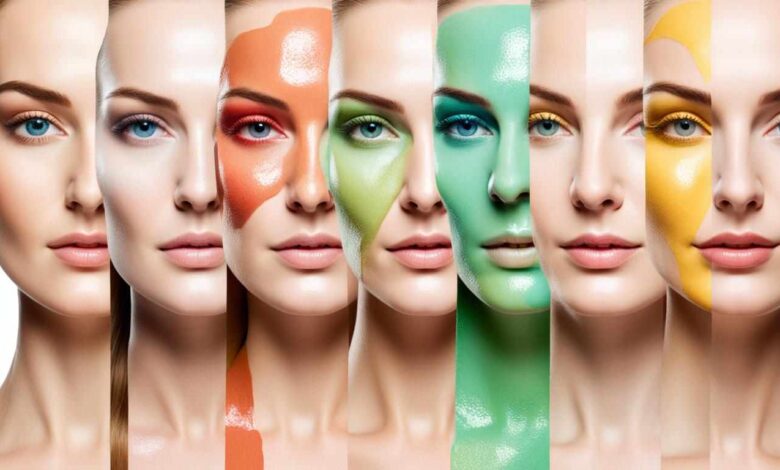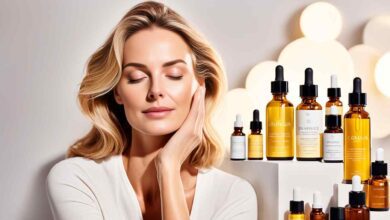
In the quest for healthy, glowing skin, choosing a skincare routine is as important as finding the right diet or exercise regimen. With countless products available and diverse skin needs, testing a skincare routine becomes essential to determine what works best. A “skincare routine test” is not about using every product available but rather understanding your unique skin type, concerns, and how it responds to different ingredients. This essay explores how to test and develop a skincare routine that suits your skin, ensures results, and builds a foundation for lifelong skin health.
Understanding Your Skin Type
The first step in creating an effective skincare routine is identifying your skin type. Most skin falls into one of five general categories:
- Oily Skin: Characterized by excessive sebum production, oily skin often appears shiny and may be more prone to acne or clogged pores.
- Dry Skin: Dry skin lacks moisture and may feel tight, rough, or flaky, particularly after cleansing.
- Combination Skin: Combination skin features both oily and dry areas, typically with an oily T-zone (forehead, nose, chin) and drier cheeks.
- Sensitive Skin: Sensitive skin reacts more easily to products, often with redness, itching, or irritation.
- Normal Skin: Neither oily nor dry, normal skin has a balanced texture and tone, with few visible pores or issues.
To determine your skin type, observe it after washing with a mild cleanser and without applying any products for about an hour. This test will reveal whether your skin feels oily, dry, or balanced, which guides you in choosing appropriate products.
Testing Products for a Basic Routine
Once you understand your skin type, it’s time to start with a basic skincare routine test. Skincare routines generally follow three main steps:
- Cleansing: Removes dirt, oil, and impurities.
- Moisturizing: Hydrates and strengthens the skin barrier.
- Sunscreen: Protects against sun damage.
While these three steps provide a solid foundation, other products like serums, exfoliants, and masks can be added depending on specific skin concerns.
Step 1: Choosing a Cleanser
The cleanser should match your skin type. For example:
- Oily Skin: A foaming or gel-based cleanser can help reduce excess oil without stripping the skin.
- Dry Skin: Cream or oil-based cleansers can provide additional hydration and prevent tightness.
- Sensitive Skin: Look for gentle, fragrance-free cleansers to reduce irritation.
Testing a cleanser involves observing how your skin feels after washing. If your skin feels tight, dry, or irritated, the cleanser may be too harsh. If it still feels oily or sticky, it might not be effective enough.
Step 2: Moisturizing
The moisturizer you choose depends on your skin’s hydration needs. People with oily skin may prefer lightweight, non-comedogenic gel moisturizers, while those with dry skin benefit from richer creams with ingredients like ceramides and hyaluronic acid.
When testing a moisturizer, check for any immediate reactions such as redness or stinging. After a week, if the moisturizer leaves your skin feeling balanced and soft without causing breakouts or irritation, it’s likely a good fit.
Step 3: Sunscreen
Sunscreen is essential in any routine. A broad-spectrum sunscreen with SPF 30 or higher protects against both UVA and UVB rays, which can prevent premature aging and skin cancer. Testing sunscreen involves checking for comfort and ease of wear. It should feel light and non-greasy, especially if you wear it under makeup.
Adding Targeted Treatments
Once a basic routine is in place, you may want to address specific concerns such as acne, hyperpigmentation, or fine lines. Here’s a look at some common targeted products and how to test them in your routine.
Serums
Serums are potent products designed to address specific skin concerns. Common serums include:
- Vitamin C: Known for brightening and reducing pigmentation, vitamin C should be introduced gradually, starting with a low concentration.
- Hyaluronic Acid: Hydrates and plumps the skin, ideal for dehydrated skin types.
- Retinol: Stimulates collagen production and can reduce fine lines and acne. However, retinol can cause dryness or irritation, so it’s best to use it sparingly at first.
When testing serums, apply them after cleansing and before moisturizing. Start with a patch test to see if any irritation occurs. If your skin tolerates it well, gradually increase usage to see results over time.
Exfoliants
Exfoliation removes dead skin cells and promotes cell turnover, which can improve texture and brightness. Chemical exfoliants, such as AHAs (alpha-hydroxy acids) and BHAs (beta-hydroxy acids), are popular because they are effective and generally gentler than physical scrubs.
To test an exfoliant, start once a week, gradually increasing frequency if your skin can tolerate it without redness or peeling. Avoid over-exfoliating, as this can damage the skin barrier and cause irritation.
How to Test for Reactions and Irritation
When introducing new products into your routine, it’s essential to patch-test each one. Apply a small amount on the inside of your wrist or behind your ear and wait 24 hours to see if any reaction occurs. If the area becomes red, itchy, or irritated, the product may not be suitable.
For facial products, introduce only one new product at a time. This allows you to identify any potential irritants and better understand which products work for your skin.
The Timeline of Results
Skincare requires patience, as results aren’t usually instant. Here’s a general timeline for when you can expect to see changes:
- After 1 Week: Skin may feel more hydrated or balanced, depending on the cleanser and moisturizer. Any immediate reactions, like breakouts or redness, are also likely to show up within the first week.
- After 4 Weeks: Cell turnover completes, which means any long-term benefits, like smoother texture or reduced acne, may start to appear. Retinoids and exfoliants often take a few weeks to show full results.
- After 12 Weeks: For targeted concerns like hyperpigmentation or fine lines, results are often most visible after three months of consistent use.
Adjusting Your Routine Seasonally
Your skincare needs can vary by season. For instance:
- Winter: Skin tends to be drier, so thicker moisturizers and hydrating serums can help. You may also need to exfoliate less frequently to avoid irritation.
- Summer: Oily skin can become oilier, so lightweight, gel-based products and stronger sun protection are ideal.
Testing your routine for each season helps ensure your skin remains healthy year-round.
Common Mistakes in Skincare Testing
While building a skincare routine can be exciting, avoid these common mistakes:
- Overloading on Products: Trying too many new products at once can overwhelm the skin, making it difficult to identify what works. Start simple and gradually add products if needed.
- Switching Products Too Soon: Skincare takes time. Switching products too quickly because you don’t see immediate results can prevent you from experiencing the long-term benefits.
- Ignoring Ingredients: Understanding key ingredients and potential irritants (like fragrances or alcohol) helps in choosing products that are less likely to irritate your skin.
Assessing Your Skincare Routine’s Success
To evaluate your skincare routine’s effectiveness, observe your skin’s overall health and comfort:
- Look for Improved Texture and Hydration: A balanced routine should leave your skin feeling smooth, soft, and adequately moisturized.
- Reduced Breakouts: If acne is your concern, a reduction in breakouts or faster healing time indicates a successful routine.
- Brightened Complexion: Dark spots or dullness should diminish over time if you’re using brightening products.
If, after several months, your routine isn’t yielding results, consider re-evaluating the products or consulting a dermatologist for tailored advice.
Conclusion: The Value of Testing Your Skincare
Testing your skincare routine is a valuable process in discovering what truly benefits your skin. By understanding your skin type, testing products one at a time, and giving them adequate time to work, you build a routine that brings out the best in your skin. Skincare is an ongoing journey, as skin needs to evolve, but with careful testing and consistency, it’s possible to develop a routine that keeps your skin healthy.




